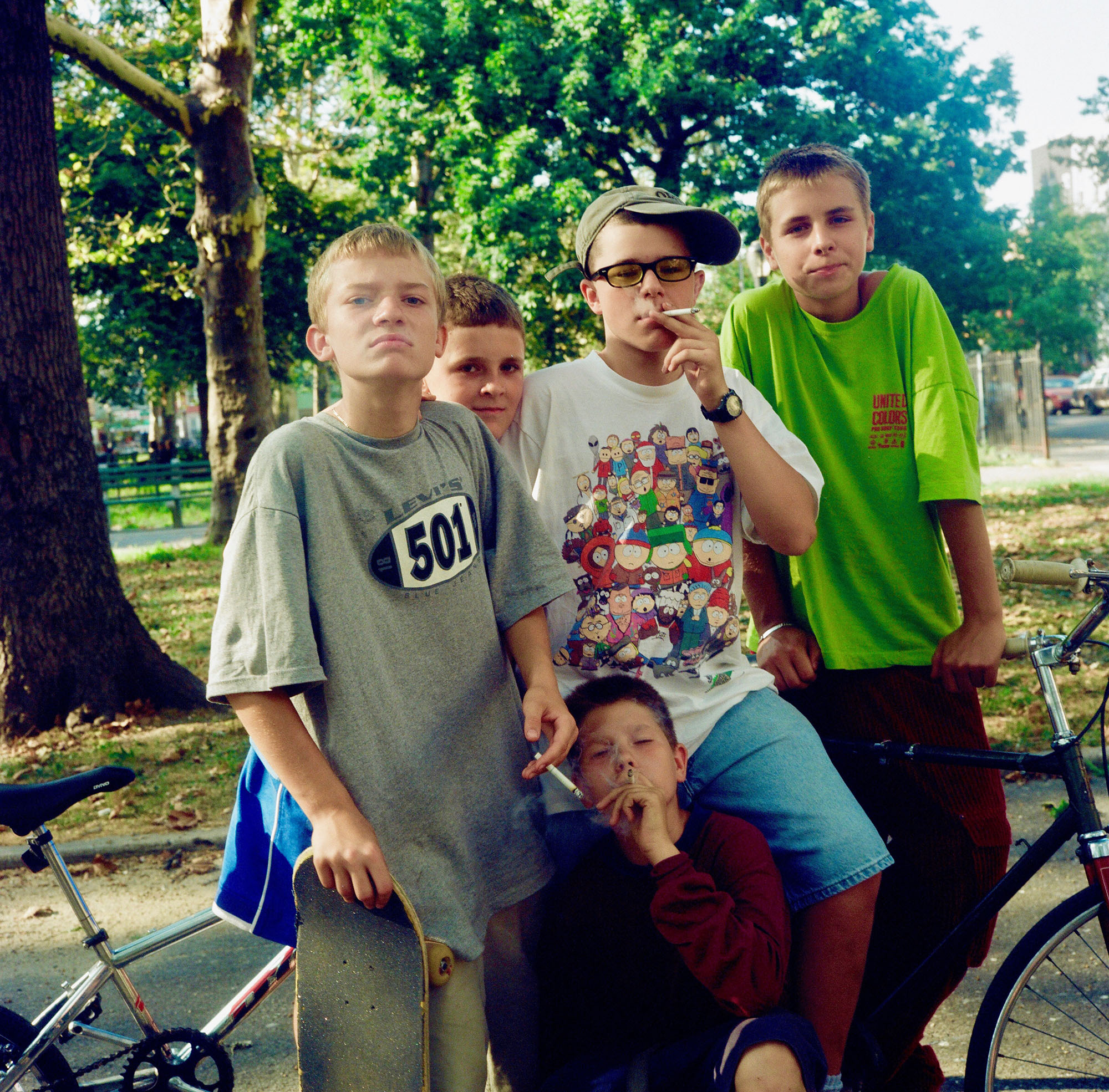
These days, Brooklyn is a stronghold in skateboarding, but that wasn’t always the case. Just a couple of decades ago, Brooklyn barely had a skate scene at all. Things have definitely changed around here, and those changes are most noticeable in Williamsburg, the trendy little neighborhood that birthed the modern day hipster.
Williamsburg used to be a magnet for blue-collar immigrant families, and before that, it was the land of the Canarsee tribe of Native Americans. After the manufacturing jobs dried up in the late 1960s and the locals started being pushed out, there was a spike in unemployment, crime, and illegal drug use. In short, Williamsburg got cutty, until an early-2000s rezoning law sparked the stunning surge in gentrification the neighborhood is known for today.
We came across two skaters—Terrence Miele and Damian Bielak—who grew up in Williamsburg and are working on memorializing its pre-gentrified roots through photos they shot skating back in the day. They compiled their favorites in their book Skate Lovin’ Rascals.
Read on to see a few excerpts and hear about how things have changed in one of the world’s most commodified and trendy neighborhoods.
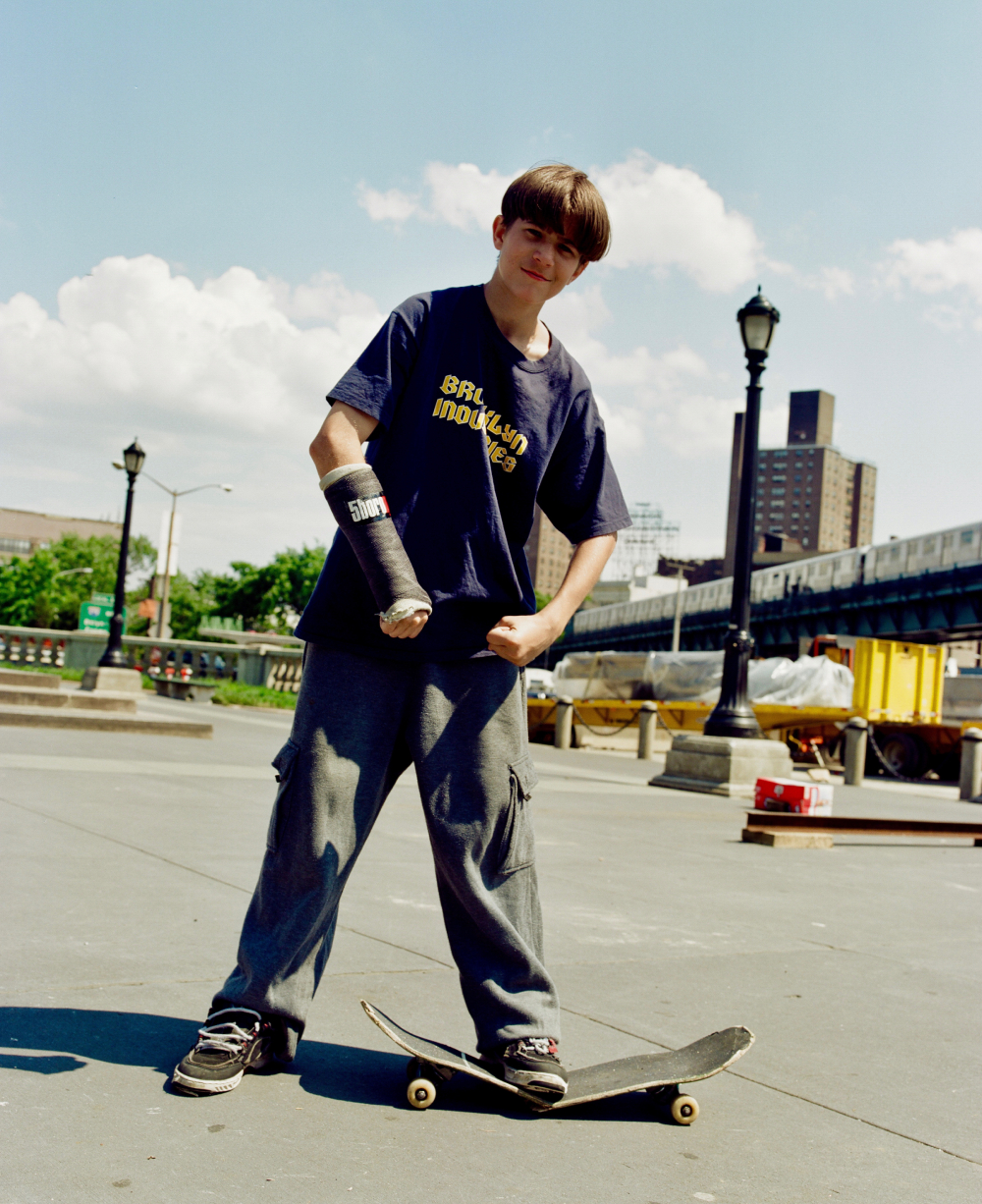
What was the landscape of Brooklyn like back when you were shooting these photos?
Damian Bielak: The Brooklyn we knew was an industrial wasteland left to rot as the factories and jobs left the neighborhood to go elsewhere. It was poor, but people found ways to make it through. Williamsburg was neglected but resourceful, strong and creative. It almost felt as if it was forgotten by the city, but yet right across the East River, the Empire State Building reminded you this city was rich.
Most of the neighborhood was Polish and Italian in the Northside and Puerto Rican and Dominican on the Southside. The artists were spread out all over but they were closest to the L train. Most people were recent emigrants and stayed close to their community. Some people never learned English because their community provided them with everything they needed.
Terrance Miele: For me, Williamsburg was known as a spot for cheap rent and where photographers and artists would move to. Everybody wanted to go out and party at night, but I went out on my bike and photographed the people and their landscape.
There were a lot of drugs in Williamsburg and Greenpoint in the late 90s’ among the Polish kids. A lot of the kids were trying and using heroin and not realizing the danger of it. It was being sold under a different name. There was boredom and curiosity and trauma. You can see it in the pictures I was taking. On their faces and in the expressions, the drugs were there.
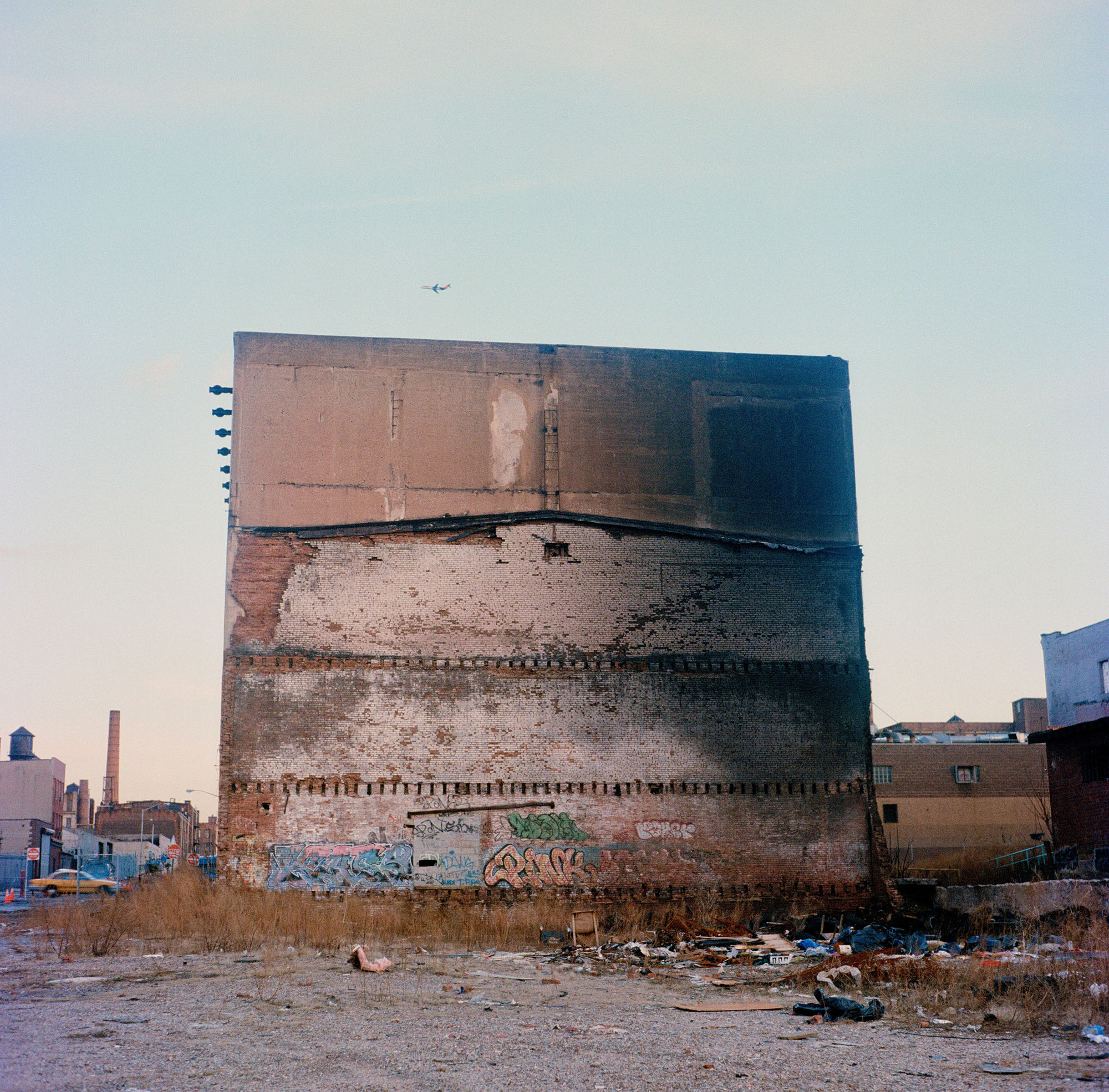
What was the Williamsburg skate scene like at the time?
T: The skate scene there was very DIY. Kids would find cones, police barriers and would make their own rails. Cops would often stop me, wondering why I cared about photographing the landscape in the neighborhood. They didn’t see the beauty there.
D: From a skater’s point of view, it was rough. The streets and sidewalks were cracked and crooked and I would feel the rattling of the wheels in my legs and stomach. It would make me feel nauseous. The feeling went through my body. Falling on those streets was painful. But there was something magical about it. Every day was an adventure for us, especially during the summer. I always thought that the way to be able to find resources in neglect is in imagination. We had a lot of that.
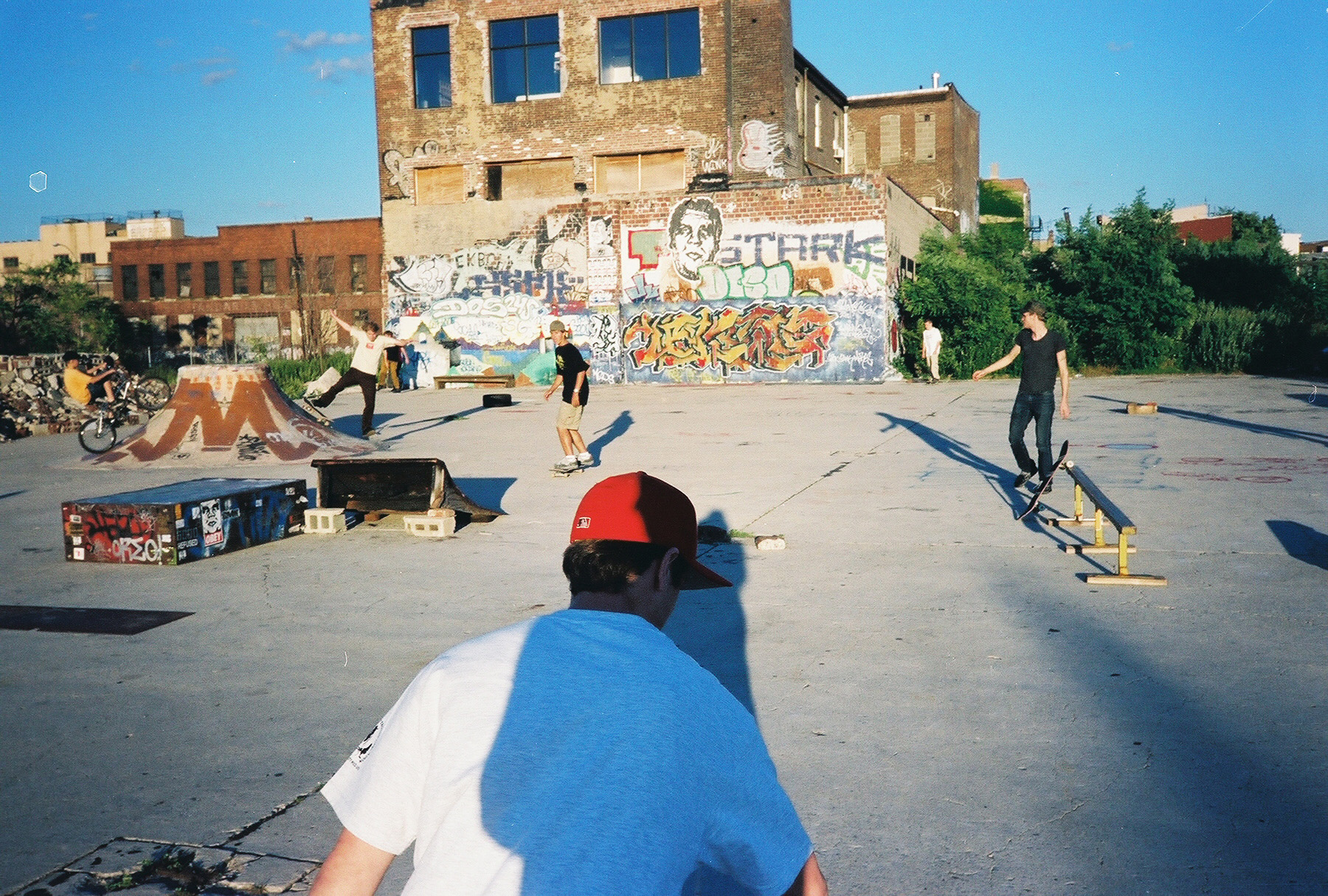
What were the most frequented spots back then?
D: Washington park, also called The Monument, was the spot that was most frequented. But we also had the BQE and The Square at McGuiness Blvd. I never understood why The Square was so popular because if you mess up, your board is getting run over by a car. But we made the best of it.
How did your crew get cigarettes and booze being as little as you are in these photos?
D: This is not us in this picture but it sure could’ve been because we were street kids, always out and about. We could’ve easily been pushed into a negative place and gained self-destructive habits. That’s a group of kids from Greenpoint, who skated at McCarren Park. Kids want to grow up so fast and out of fear of appearing vulnerable, sensitive, and emotional they say, “Take a picture of me smoking these cigarettes, I’m tough and I don’t care.”
It’s more of a cultural norm to smoke and drink at a young age in Poland, so getting it was easier. My parents are from Poland and I remember my father asking my brother and me if we would like a beer every time we went to the bodega together. I remember being about seven or eight. In Polish, he would say, “Do you want some water?”, as he would point to the beer section of the fridge. The Polish word vodka comes from the Polish word for water. We never accepted his offer though. My mother would’ve been hella upset.
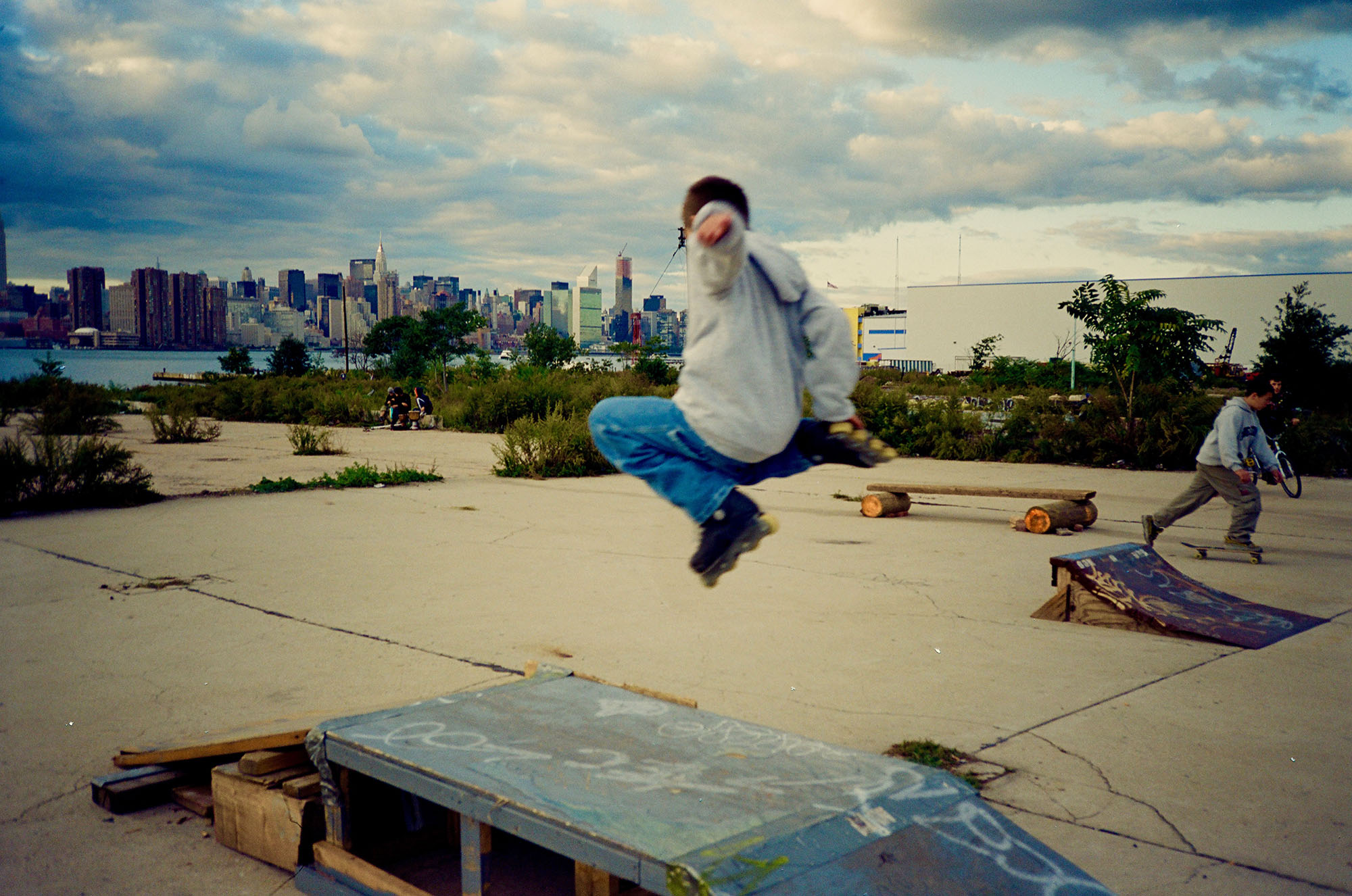
Tell me about that DIY park on the water. How did it come about and how long did it last?
T: This spot was one of those spots that you had to know about to find it. You had to be an insider.
D: It was along the water on Kent Ave. That mile strip of the Williamsburg waterfront was neglected and desolate. Weeds and plants were overgrown and it felt like a forest. There were piers that were rotting away into the water and people would go out fishing there. Some people would be living there in handmade shacks and tents. Others would bring their instruments and play music. Along the edge was the view of the city making everything feel possible. A dream place for a curious kid.
There’s a video out there called Skankytown-The Brooklyn Volcano Skate Spot. It is bonus footage on the Deathbowl to Downtown DVD. In the video Steve Rodriguez and 5Boro are building a quarterpipe with cement and bricks and skating the volcano. In the video you can see the spot and it’s a nice way to view what that place was like. The serene quality of it. Jason Dill and Bobby Puleo have classic skate shots at this spot. The spot lasted till about 2006 and then development began to take it over.
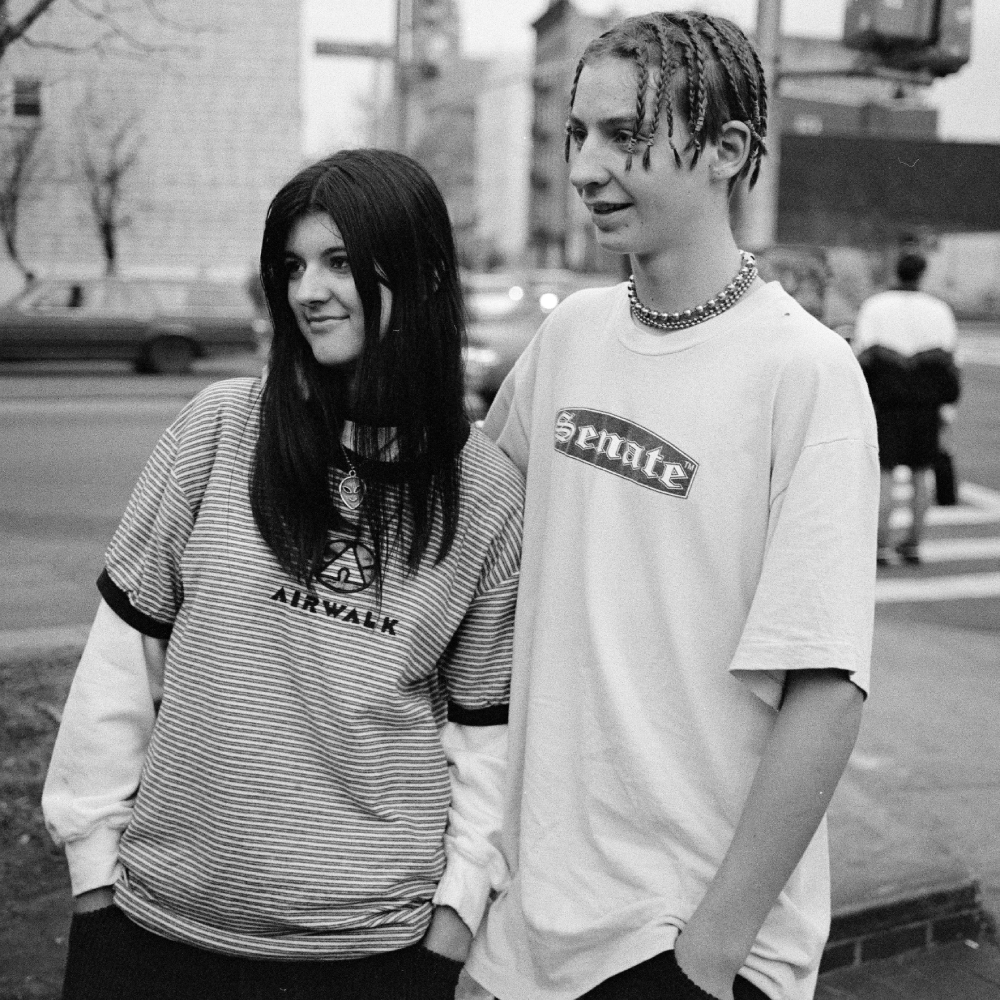
Williamsburg has a pretty good view of Manhattan and the World Trade Center. Where were you guys on September 11th? Do you think that had any effect on your neighborhood in the aftermath?
T: This is a really tough question. I was actually working for Barron Claiborne at the time whose studio was about four blocks away. We had nothing scheduled so I had off. From time to time I do think about what I would have done had I been working down there that day. I was listening to the TV in the background. I was up early that day and everything got interrupted as the first plane hit. At that point I was on the phone with the New York Times magazine, figuring out if I should go by the East River to get some stills.
There were maybe eight or ten of us there at the time. The first building had just gone down. There was another guy there bragging how he had just got some footage. I remember absolutely hating this guy’s attitude and giving him an extremely hard time. Lives had just been lost. Again, it’s a complicated thing when you’re part of something tragic happening but are tasked with the responsibility of documenting it. You have the anxiety of being in a certain situation while having to maintain a certain amount of sensitivity and integrity.
I watched the second building go down from the waterfront. There was debris like Xerox papers already reaching over here. I remember taking about eight to ten photographs of the skyline and just giving up. The years after, the city was greatly impacted, especially small businesses, photography, and the movie industry. People stopped coming here and work in all of these industries dried up. A lot of us were forced to take on different jobs and take a break from our freelance work.
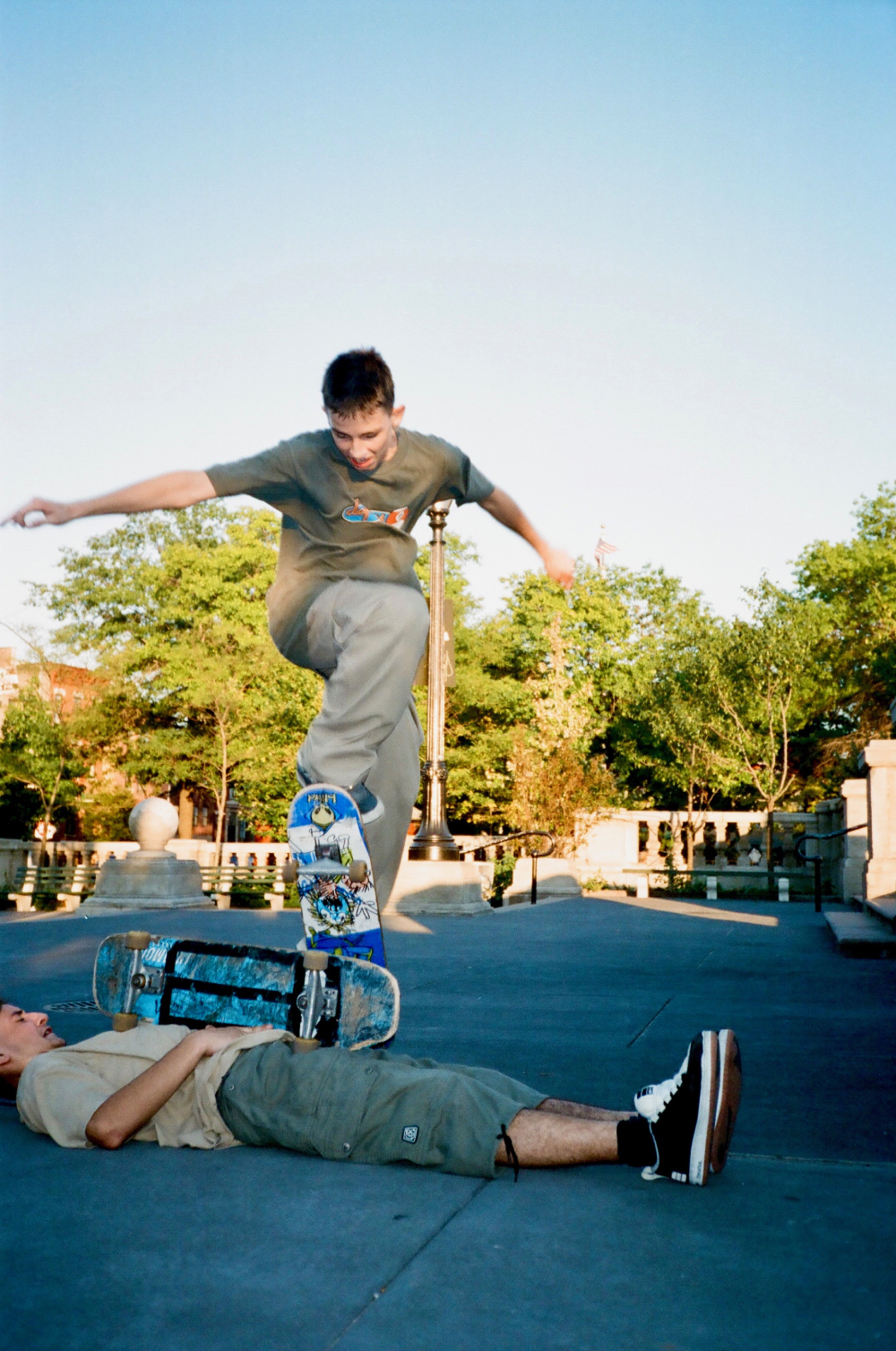
Were there any pioneers that helped put Williamsburg on the map?
D: I would say Amy [Gunther], the owner of KCDC put Williamsburg on the map. We were lucky to have a skate shop just a few blocks from where we grew up. It must’ve been the only skate shop in Brooklyn at that time. I remember my brother and I came across it as we were walking around the neighborhood.
KCDC moved from that location with the ramp, right?
D: Yeah, I remember when KCDC had to leave their spot on North 11th, which would become the VICE magazine headquarters. A few years later, VICE would also have to leave this location. That KCDC location was hard for us to lose. That was a special spot. It was big and had high ceilings and a mini ramp. That place was like a skateboarding hub and skaters from around would meet there. That was also a good block to skate on. There was the Yellow Ledge that we would skate on the corner of North 11th and Wythe Ave. It is now the Wythe Hotel. KCDC built a community on that block. Shout out to Amy.
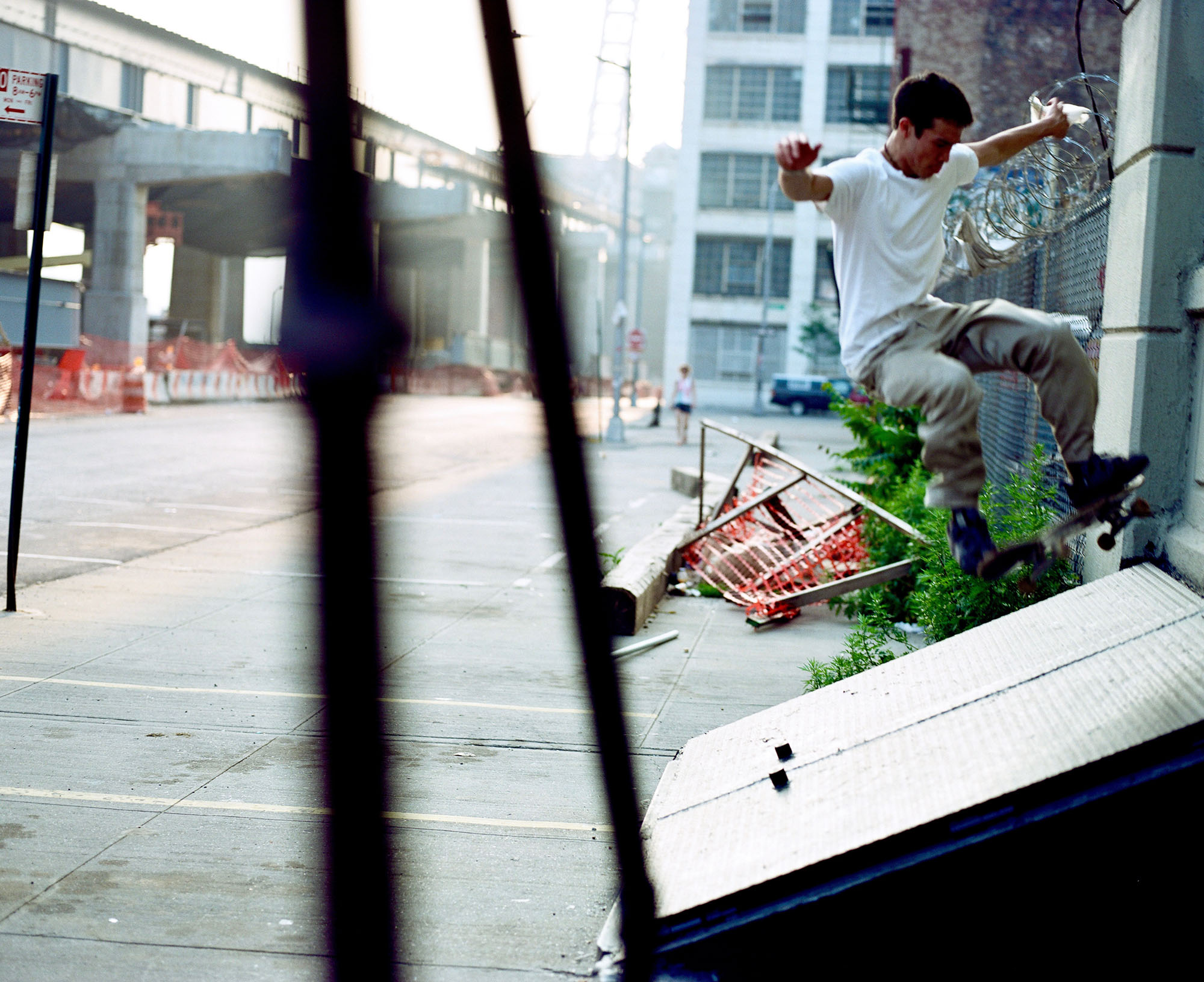
At what point did you guys start to see major development and the beginning stages of gentrification?
D: I would say 2005 was when it really hit. The mayor [Michael Bloomberg] rezoned the neighborhood from industrial to residential. This allowed investors to buy up property, particularly along the waterfront, and construct luxury housing. It was certainly already happening by then but this sped it out of control until the neighborhood became unaffordable for a common working-class person.
Housing policies and government actions have a lot to do with it – such as redlining and creating incentives for people to move to the suburbs. The neighborhood went from a working-class last resort to somewhat of a private college campus where kids come to have a good time and where being accepted ain’t enough if you can’t pay the high fee.
T: I think it was when US News and World Report ranked the neighborhood as a Top 10 place to move to for an artist. Landlords began to reject renewing of leases so that they can make more money on new tenants. Landlords began to rent out bare loft spaces and would expect you to build it up. The new popularity exceeded what they thought they were supposed to give you. Landlords took advantage of its popularity.
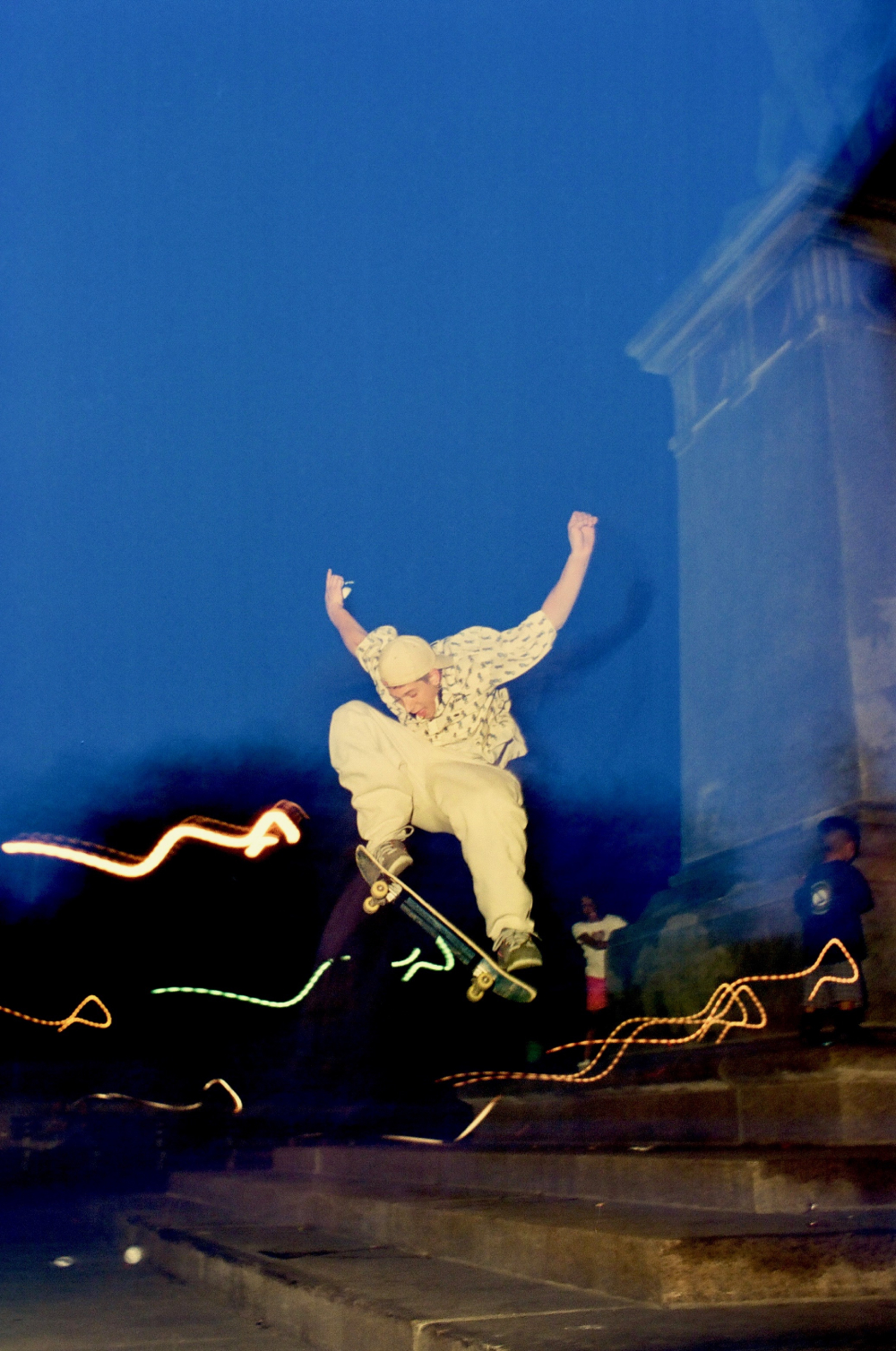
How has your rent situation changed in the two decades you’ve lived in Williamsburg?
T: I have been part of a privileged few to actually get in on a rent-stabilized apartment. It has its ups and downs. When you’re not paying the $2,500 a month that another tenant is paying, it can be hard to get things fixed or addressed. We seem to have a silent agreement where I fix or deal with upkeep instead of bothering the super unless it’s absolutely necessary.
You always do have to worry about the building being sold without your knowledge. I wish there was some type of option when tenants have invested in a building for so long that there would be at least an option for them to attempt a co-op before it went up for sale. Williamsburg is an incredibly transient place. I think I have been through at least 12 roommates who just decided Williamsburg and Brooklyn are not for them and moved away. When I got here the average rent was about $600 to $800 a month depending on the apartment. Most people in this building right now are paying $1800 to about $2500.
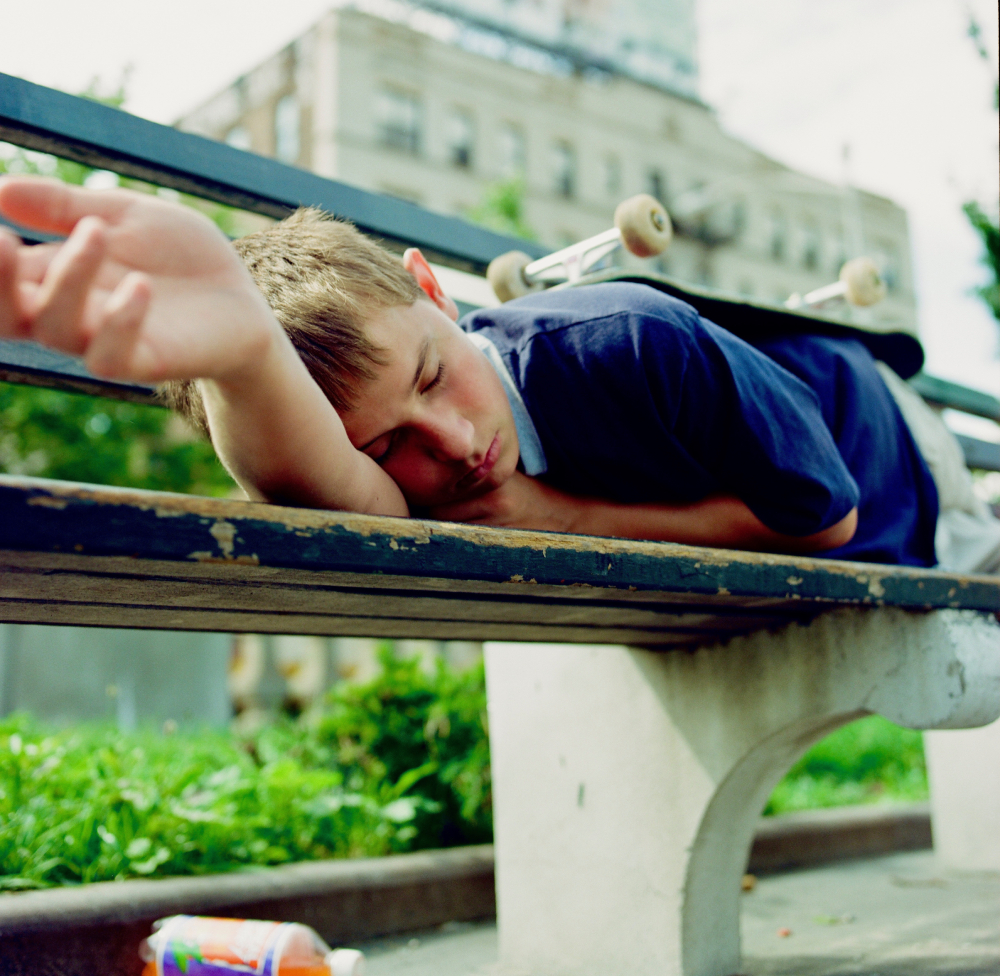
What do you think about how they are expanding the “Williamsburg” name into other parts of Brooklyn?
T: The term Williamsburg is just being used to commodify and make a place trendy before it has gained the attention of the rest of the city.
D: I remember when I was growing up parts of Williamsburg were being labeled as Greenpoint to try and get the Polish population to move into the desolate and neglected neighborhood. But now parts of Greenpoint are being labeled as Williamsburg to rent and sell apartments to people wanting to be in Williamsburg. There is only so far that the borders of a neighborhood could be stretched.
Did you ever swim in the notorious East River? How toxic do you think that water is?
T: I never once thought about swimming in that River. Personally, I saw a lot of waste management and chemical companies around the river, so it was never a thought. I remember staying in Greenpoint with my friend Ben and learning about the Newtown Creek oil spill. It was one of the worst oil spills in the history of the United States in the ’70s. There is a lot of research that points to a higher rate of breast cancer in women in this neighborhood so I never had an urge to get into that river.
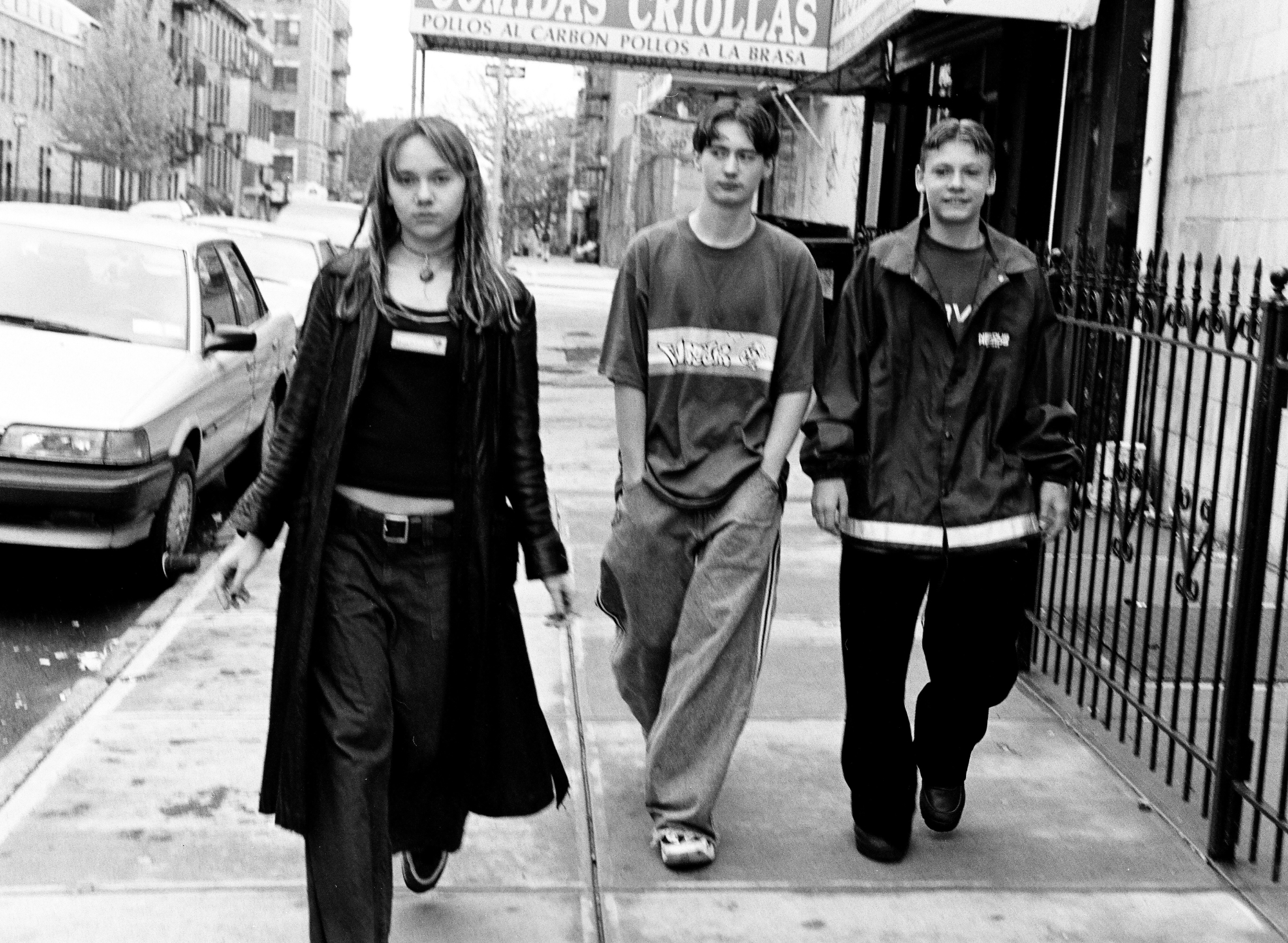
Today is there much of the old Williamsburg left?
T: A few people are definitely still around that I photographed, who I keep in touch with. They now have families and kids. They too have managed to stay in the neighborhood because of low income or rent-stabilized apartments. Personally, as a photographer, I’m always on the hunt for any place in New York City or Brooklyn that still appeals to my sense of nostalgia.
D: I see the community. Some have held their ground even though everything around them has changed and moved on. Communities know how to stay put and they’re often the ones still remaining even after everything and everyone tried to get them out. I like that I can walk around in Williamsburg and older people still come up to me and tell me they remember me when I was a child.
What do you guys recommend for the many skateboarders that move into low-income areas within a city to better assimilate and be a positive rather than a negative?
D: I would say that they would have to understand that space means a lot to people as there is history and memories there. Love is there. Pain is there. Childhood is there. Family is there. That space is sacred. It’s priceless to be from a neighborhood where a whole community remembers you since you were a child. Losing that can be painful.
T: Talk to other skaters. Don’t be pushy, be humble. Don’t be upset about a local cutting you in line at a bodega. Understand the philosophy of “Locals Only”. Give it time. Let them develop a relationship with you at their pace. As a photographer, I apply this and first create a bond of trust.
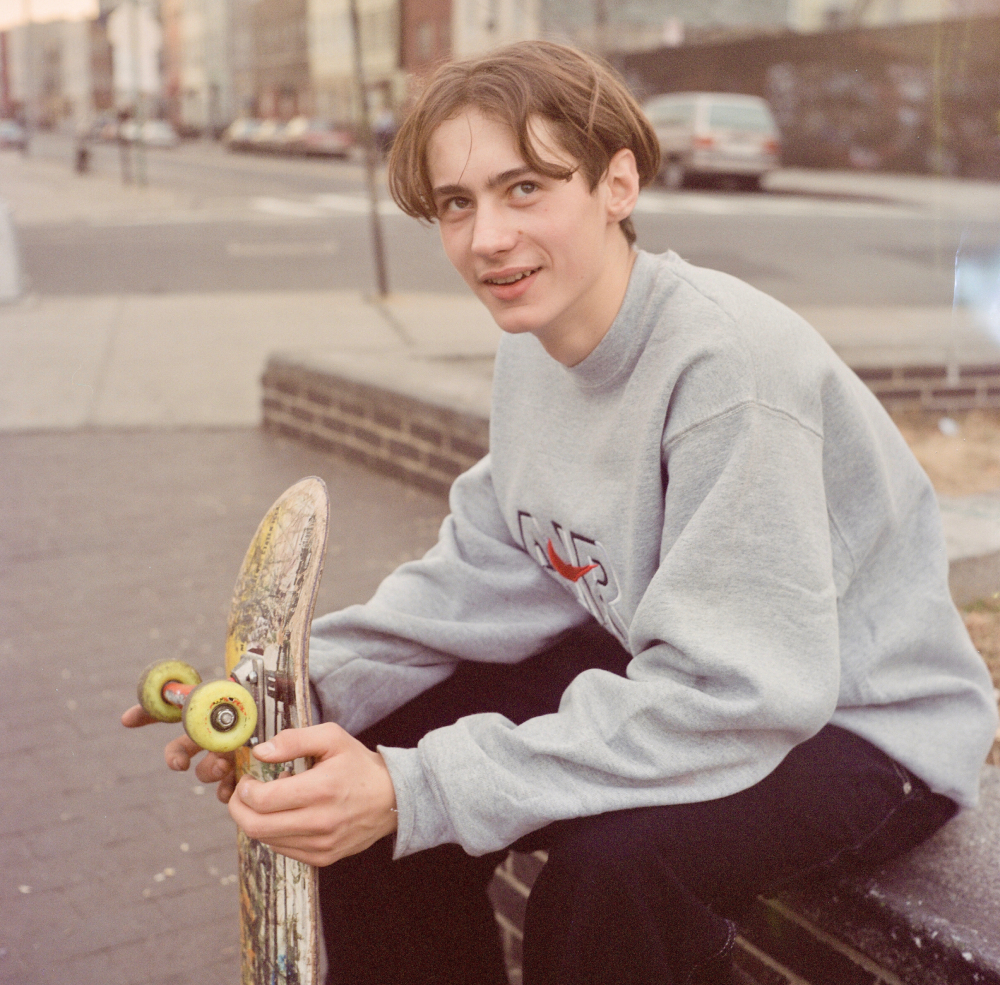
What made you start documenting all of this and your local neighborhood back in the 90s?
T: I knew that I wanted to document this stuff because it would soon dissipate. I could feel it in the air. There was this charisma and honesty in the ’90s that I had to get down on film. I remember the internet was just coming in, and sooner or later, the “hanging out all day” attitude would be gone. There’s a lot of distraction now. One on one time spent together and conversations used to last a lot longer and this creates better pictures. This is why I looked up to Stacy Peralta and Ed Templeton as artists. They had that.
D: I wanted to document my childhood because I was afraid that I would lose everything that reminds me of it. I knew I couldn’t stop this change from coming so instead I wanted to turn that frustration into something. My mother lost her apartment to eviction when we were growing up. That experience made us more sensitive to the change that we were witnessing around us – it became personal. It gave us a need, and doing this kind of documentation fills that need.
Related Posts
Comments
Popular
-
 RECONTEXTUALIZING ZAK ANDERS, ONE OF TODAY’S MOST MYSTIFYING SKATERS
RECONTEXTUALIZING ZAK ANDERS, ONE OF TODAY’S MOST MYSTIFYING SKATERS
"I don’t want to be this brutal punk that hates everything that people like, and I’m trying really hard to undo that."
-
 RARELY SEEN PHOTOS FROM READ AND DESTROY, THE BELOVED BRITISH SKATE MAG
RARELY SEEN PHOTOS FROM READ AND DESTROY, THE BELOVED BRITISH SKATE MAG
Check out early documentation of London's Southbank, vert ramps tucked into Lord of the Rings-level forests, and everything in between.
-
 NAVIGATING SKATING’S HIGHS AND LOWS WITH MATT MILITANO
NAVIGATING SKATING’S HIGHS AND LOWS WITH MATT MILITANO
Over coffee and cigarettes Matt talks prank shows, ABDs and his love for the VX.
-
 A CHAT WITH LUDVIG HAKANSSON, THE OLDEST SOUL IN SKATEBOARDING
A CHAT WITH LUDVIG HAKANSSON, THE OLDEST SOUL IN SKATEBOARDING
The man loves to read Nietzche, skates in some expensive vintage gear, and paints in his own neoclassical-meets-abstract-expressionist style.
-
 MEET THE SEATTLE ARTIST WHO DESIGNED A BACON ’N EGGS INSPIRED SKATEPARK
MEET THE SEATTLE ARTIST WHO DESIGNED A BACON ’N EGGS INSPIRED SKATEPARK
Breakfast-obsessed skaters rejoice!

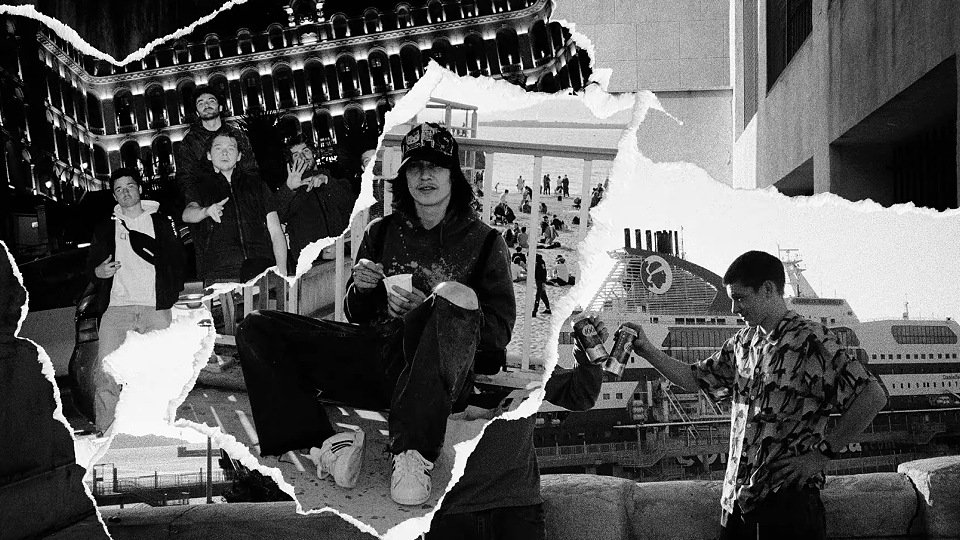
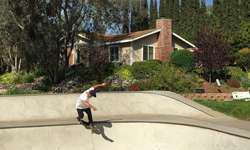
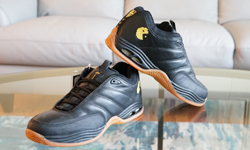
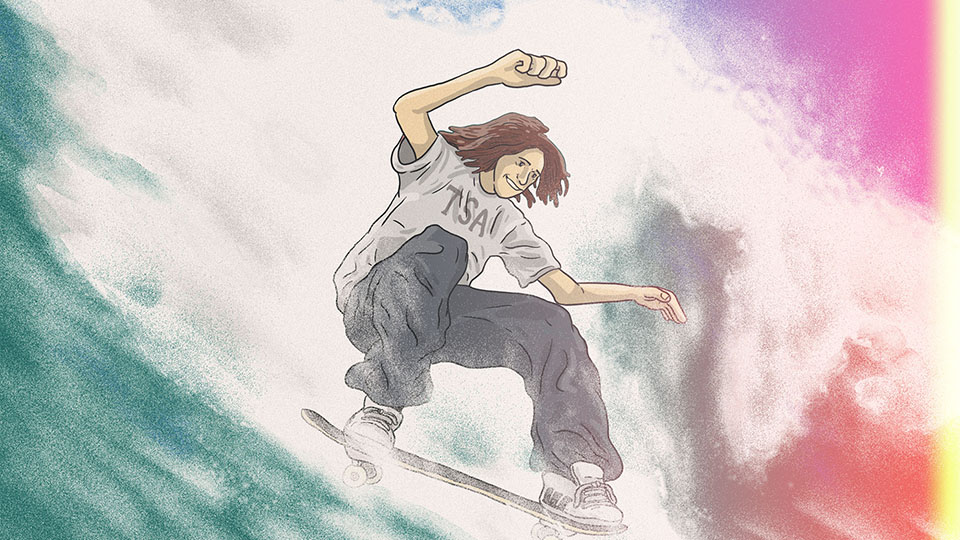
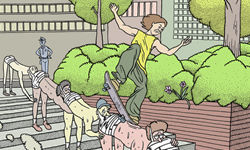
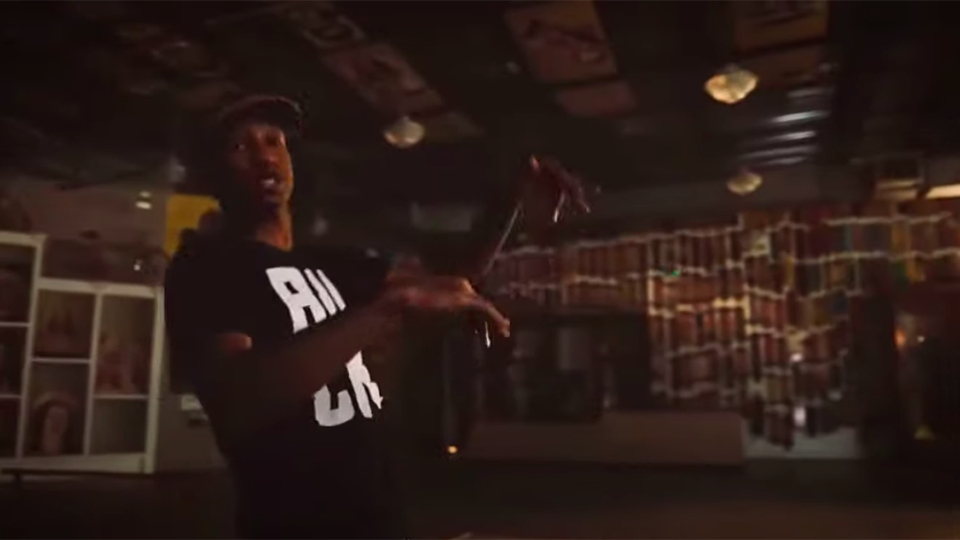
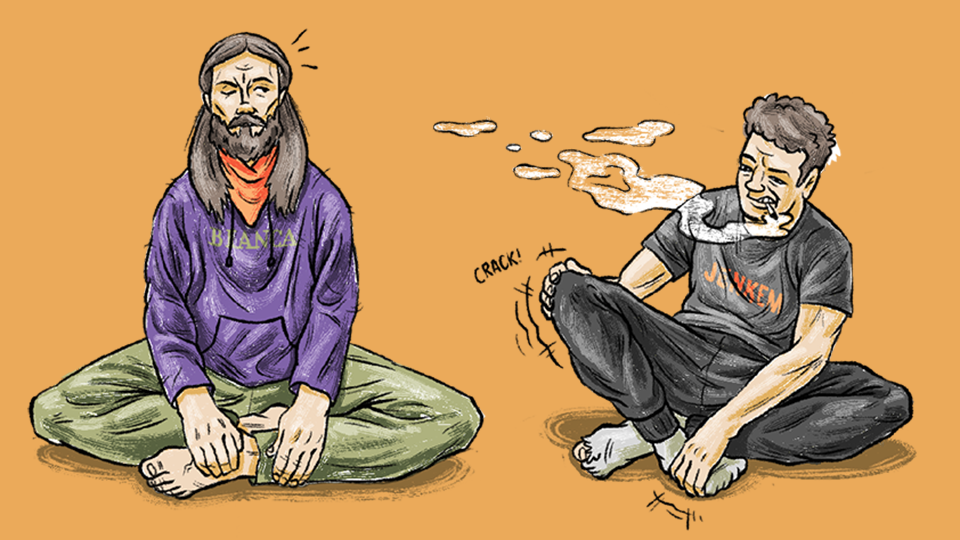
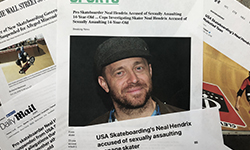
June 15, 2020 7:06 pm
I can’t tell whether these photos were taken in 94 or last week.
June 17, 2020 11:51 am
Mostly between 94 and 2001
March 20, 2021 6:41 am
haha true!
lovely fotos
June 16, 2020 3:37 pm
Very dope.
Nice escape from the current day.
Wish people could be nicer to eachother again.
June 17, 2020 11:50 am
Could not have said it better myself and definitely one of the underlying philosophies of the work ✌ thanks for taking the time to read the article
June 16, 2020 4:57 pm
A little racist tbh. A lot of whites.
June 16, 2020 9:17 pm
Explain?
June 17, 2020 3:20 am
Maybe the polish people white
June 17, 2020 8:23 am
Don’t worry, whites will be a protected minority too soon thanks to the West’s immigration policy
so soon this article will have just the right amount of minorities in it for you to be happy :-)
June 17, 2020 11:49 am
✌
June 17, 2020 11:46 am
Greenpoint was predominantly a Polish neighborhood .Williamsburg had quite a diverse crowd, there is quite a diverse crew represented in full publication. ✌
June 17, 2020 8:02 pm
It’s not racist until they start calling you dirty beaner
July 8, 2020 12:28 pm
what is wrong with white people? why do you see skin color? not the content of the photos. That is pretty racist of you.
June 17, 2020 2:13 am
sick
June 17, 2020 11:48 am
Much appreciated, thank you for taking the time to read the article StayWell